Introduction
In 1987, a few months before MPEG was the established, ISO TC 97 Data Processing became the ISO/IEC Joint Technical Committee 1 (JTC 1) on Information Technology. With this operation the data processing industry, renamed information technology industry on the occasion, was able to concentrate on a single Technical Committee (TC) all standardisation activities needed by that industry, including those “electrical”, until then the exclusive purview of IEC.
Thirty-two years later, JTC 1 has become a very large TC, but inside IEC things have been all but static. A major achievement, dating back a couple of decades ago, has been the creation of Technical Committee 100 “Audio, Video and Multimedia systems and equipment”, that grouped activities until then scattered in different parts of IEC.
On the occasion of the IEC General Meeting that included meetings of many IEC TCs, a joint TC 100 and JTC 1 workshop was held in Shanghai on 2019/10/19. MPEG was invited to give a talk about how it develops standards and its most promising current projects. The title selected was an unambiguous “The world is going digital – MPEG did so 30 years ago”.
This article will talk about what I said in the first part of my speech: what drove the establishment of MPEG, how MPEG is organised, and main results produced by MPEG. There is a very short conclusion worth reading.
Digitising the audio-visual distribution
The MPEG story is a successful case of digitisation. Thirty years ago, the audio-visual distribution industry engaged in a process that, unlike what is often happening today, was based on international standards. But why did digitisation of the audio-visual distribution industry succeed? That was because of a number of reasons.
At the end of the 1980s
- Audio-visual data widely used since a few decades in analogue form
- Everybody understood that digitising analogue data was technically convenient but costly and that use of compression could reduce the size of digital information and even multiply available capacity
- Compression technology research was beginning to provide exploitable results
- Just everybody was waiting for an accessible audio-visual compression technology
- Telcos: new interactive services and video distribution
- Broacasters: more efficient distribution of old and new services
- CE Companies: new products for new distribution channels
- IT Companies: hardware and software for digital audio-visual distribution services.
At that time standards were needed as they are needed today,. However, at that time, the prevailing attitude of the audio-visual sector was that every industry, country, company etc. should have its own “standard”. The MPEG standardisation way of prevailed over the “old way”. Today international standards are used to compress audio, moving pictures (including 3D Graphics), and to deliver and consume audio-visual data.
MPEG standards were excellent in terms of quality and standardisation made the audio-visual digitisation technology accessible to all users from a plurality of sources. MPEG’s ability to attract all industry made itthe melting pot of the new global audio-visual distribution that eventually became the famed “industry convergence”.
This is well represented by Figure 1 where the many independent analogue basebands of the analogue worlds, instead of becoming many independent digital basebands, became the single MPEG “digital baseband”.
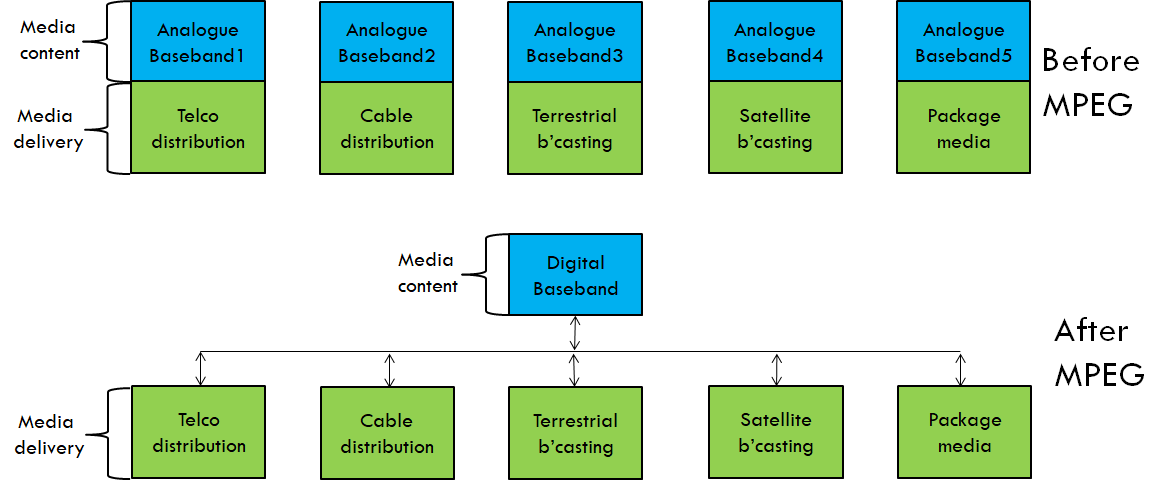
Figure 1: Audio-visual distribution before and after MPEG
The figure applies specifically to MPEG-2 but it is also the conceptual foundation of the large majority of MPEG standards that followed MPEG-2. The repetition of the first success was made possible by the “MPEG business model”:
- When developing a standard MPEG requests companies to provide their best technologies
- MPEG develops high-performance standards using the best technologies available at a given time frame
- Patents holders receive royalties which they may re-invest in new technologies
- When time comes, MPEG can develop a new generation of MPEG standards because it can draw from new technologies, some resulting from patent holders’ re-investments.
In the early MPEG days, the “MPEG industries” were those manufacturing devices (implementation industries) and those actually using the devices for their business (client industries). Both were main contributors to the MPEG standards. Today MPEG is quite different from 30 years ago because the context in which it operates has changed substantially. There is a growing role of companies who ow valuable technologies they contribute to MPEG standards but are unlikely to be manufacturers or users of the standard (technology industries), as depicted in Figure 2.
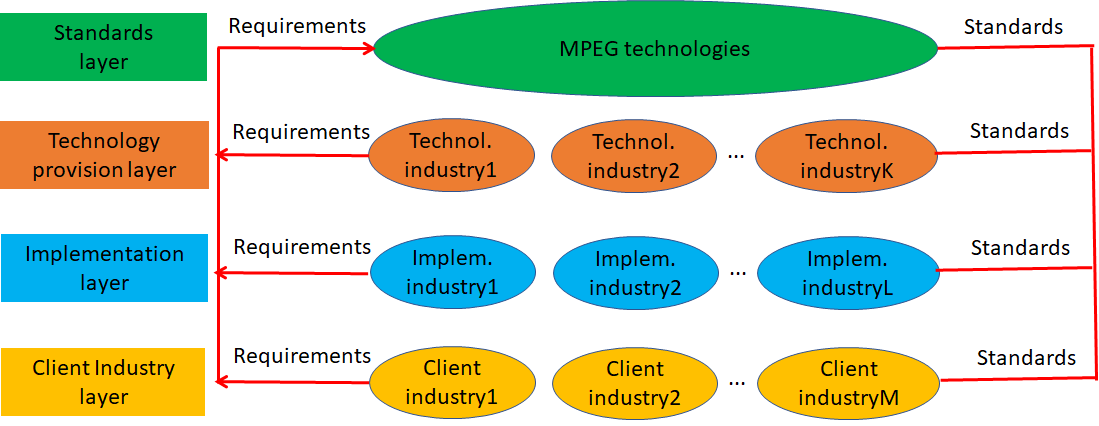
Figure 2: MPEG standards and industries
What is the inside of the machine that produces the MPEG standards? Judging from Figure 3 one could think that it is a very standard machine.

Figure 3: The MPEG organisational structure
The Requirements subgroup develops requirements for the standards to be developed; 4 technical subgroups – Systems, Video (that includes two joints groups with ITU-T), Audio and 3D Graphics – develop the standards; the Test subgroup assesses the quality; and the Communication subgroup informs the world of the results.
That’s all? Well, no. One must look first at Table 1 to see the “interaction events” between the different subgroups that took place in the last 12 months during MPEG meetings. They were 68 in total, each lasting from one hour to half a day of joint meetings, each involving at least 2 subgroups and some 3 subgroups or more.
Table 1 – MPEG interaction events in 2019
| Systems | Video | Audio | 3DG | Test | |
| Requirements | 6 | 14 | 4 | 2 | 1 |
| Systems | 11 | 3 | 9 | ||
| Video | 1 | 7 | 4 | ||
| Audio | 3 | ||||
| 3DG | 1 |
Table 1 describes the amount of interaction taking place inside MPEG but does not describe how interaction takes place. In Figure 4 the subgroups are represented as a circle surrounding “units” whose first letter indicates the subgroups they belong to. Units are temporary or stable entities within the subgroups who get together (indicated by the arrows) as orchestrated by the subgroup chairs meeting as “Technical Coordination”.
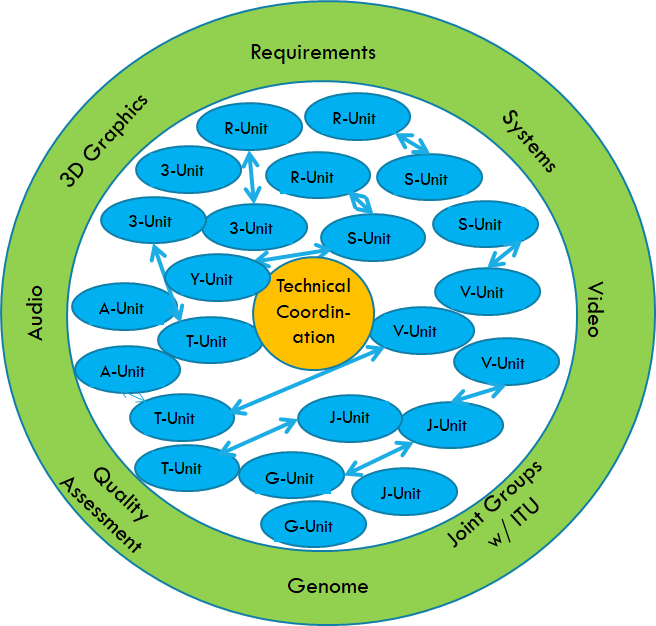
Figure 4: MPEG, subgroups and units
It is this ability to mobilise people with the right expertise that allows MPEG to create standards that can be used to make complete audio-visual systems, but can also be used independently (Figure 5).
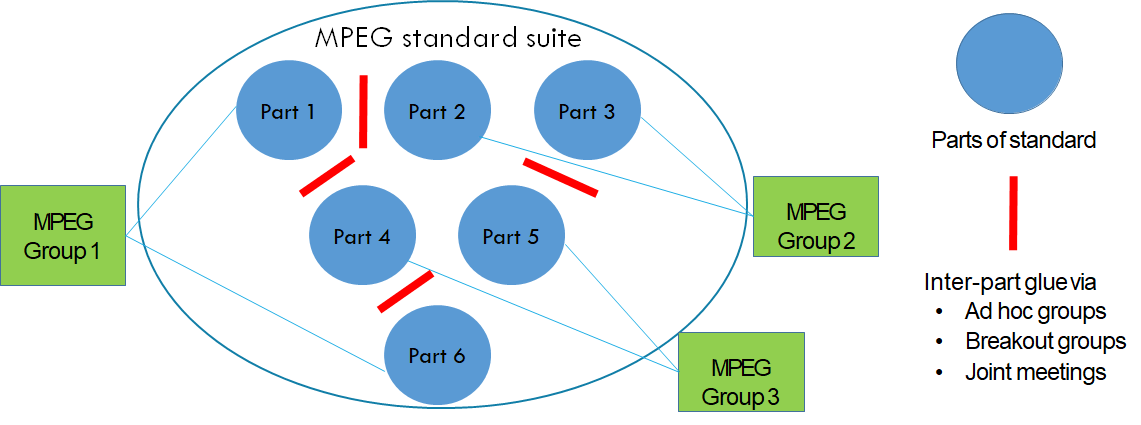
Figure 5: MPEG makes integrated standards
MPEG standards are technology heavy. How does MPEG make decisions about which technology get into a standard?
Subgroups are tasked to decide which technologies are adopted in a standard. Because standards are so intertwined, ~10% of official meeting time is used to keep members informed of what is being developed/decided in subgroups, though massive use of IT tools. MPEG members can keep themselves informed of what is being discussed and or decided where and when.
The purpose of MPEG plenaries is to review and approve subgroup decisions. These may be challenged at MPEG plenaries (and this has happened less than 10 times in 30 years). Challenges are addressed by applying thoroughly and conservatively the ISO/IEC definition of consensus.
There is an additional aspect that must be considered: MPEG does not have a constituency because if it had one it would be forced to consider the interests of that industry to the possible detriment of other industries.
Therefore, MPEG has partners, with which it develops standards and customers for which it develops standards. this is shown Table 2.
Table 2 – MPEG partners (P) and customers (C)
| Committee | Status | Standards |
| 3GPP | C | 4, DASH |
| AES | C | 2, D |
| ARIB | C | 2, 4, H, DASH |
| ATSC | C | 2, 4, H, DASH |
| CTA | C | Several |
| DASH-F | C | DASH |
| DVB | C | 2, 4, H, DASH |
| EBU | C | Several |
| IEC TC 100 | C | 2, 4, H |
| ISO TC 276 | P | G |
| ISO/IEC JTC 1/SC 24 | P | MAR RF |
| ITU-T SC 16 | P | 2, 4, H, I |
| JPEG | C | 4, 7, H |
| Khronos | C | I |
| SCTE | C | Several |
| SMPTE | C | Several |
| TTA | C | 2, 4, H, DASH |
| W3C | P | Several |
So far MPEG has produced ~180 standards. This would amount to an average of 6 standards per years. In practice it is much more because a standard is a living body that typically evolves to include many Amendments and is published multiple times incorporating those Amendments and Corrigenda. Figure 6 show how productive MPEG has been: in spite of being a working group it has produced more standards than any other JTC 1 Subcommittee.
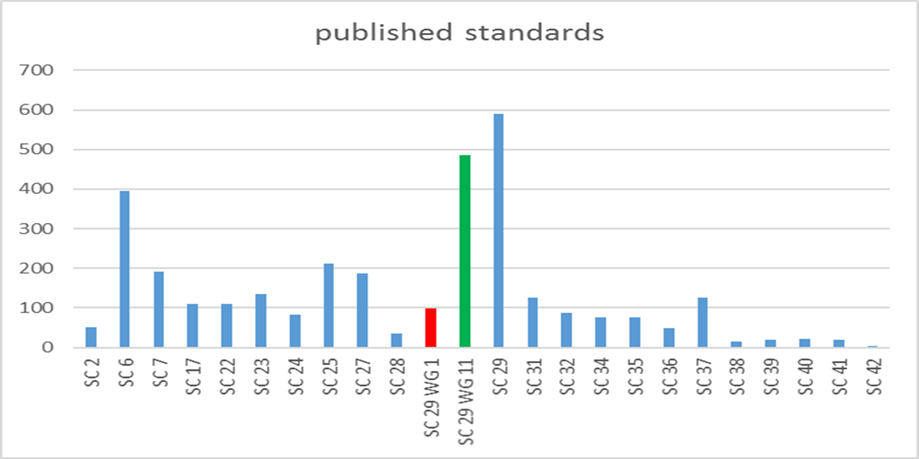
Figure 6: MPEG has published more standards than any other JTC 1 SC
Table 3 lists the 7 areas in which its standards can be classified and maps each area to one of the MPEG standards. It is easy to see that compression and transport are the areas most populated by MPEG standards.
Table 3 – MPEG areas and standards
| Areas | Standard |
| Compression | 1, 2, 4, 5, C, D, G, H, I |
| Descriptor compression | 7 |
| Content e-commerce | 21 |
| Combinations of content formats | A |
| Systems & transport | 1, 2, 4, B, DASH, H, I, G |
| Multimedia platforms | E, M |
| Device & application interfaces | M, IoMT, U, V |
Table 4 assesses the economic value MPEG has brought to the device manufacturing and service industries. The data refer to 2018. Roughly speaking MPEG-enabled devices are worth ~1 trillion USD p.a. and MPEG-enabled services are worth 0.5 trillion USD p.a.
Table 4 – The impact of MPEG standards: 1 T$ (devices), 0.5 T$ (services)
| Device manufacturing | B$ | Services | B$ | |
| Smartphones | 522 | Pay-TV | 227 | |
| Tablets | 145 | TV advertising | 177 | |
| Laptops | 103 | Games, films and music | 138 | |
| TV sets | 100 | TV production (US) | 40 | |
| Video surveillance | 37 | OTT TV | 38 | |
| Set Top Boxes | 20 | Social media | 34 | |
| Digital cameras | 18.9 | Enterprise video | 13.5 | |
| In-vehicle infotainment | 15 | In-flight Entertainment | 5 | |
| Video conferencing | 5 | TV subscriptions | 1.5 | |
| Commercial drones | 1.5 | SVOD subscriptions | 0.5 |
We should not forget that the life of a large share of the world population is constantly and pervasively affected by MPEG standards.
MPEG is a unique machine that has produced and counts on producing standards affecting the life of billions of people and wide swathes of industry. Industry and consumers have the right to expect that this machine is allowed to do its work and that no improvised apprentice tamper with it.
Posts in this thread
- MPEG: vision, execution,, results and a conclusion
- Who “decides” in MPEG?
- What is the difference between an image and a video frame?
- MPEG and JPEG are grown up
- Standards and collaboration
- The talents, MPEG and the master
- Standards and business models
- On the convergence of Video and 3D Graphics
- Developing standards while preparing the future
- No one is perfect, but some are more accomplished than others
- Einige Gespenster gehen um in der Welt – die Gespenster der Zauberlehrlinge
- Does success breed success?
- Dot the i’s and cross the t’s
- The MPEG frontier
- Tranquil 7+ days of hard work
- Hamlet in Gothenburg: one or two ad hoc groups?
- The Mule, Foundation and MPEG
- Can we improve MPEG standards’ success rate?
- Which future for MPEG?
- Why MPEG is part of ISO/IEC
- The discontinuity of digital technologies
- The impact of MPEG standards
- Still more to say about MPEG standards
- The MPEG work plan (March 2019)
- MPEG and ISO
- Data compression in MPEG
- More video with more features
- Matching technology supply with demand
- What would MPEG be without Systems?
- MPEG: what it did, is doing, will do
- The MPEG drive to immersive visual experiences
- There is more to say about MPEG standards
- Moving intelligence around
- More standards – more successes – more failures
- Thirty years of audio coding and counting
- Is there a logic in MPEG standards?
- Forty years of video coding and counting
- The MPEG ecosystem
- Why is MPEG successful?
- MPEG can also be green
- The life of an MPEG standard
- Genome is digital, and can be compressed
- Compression standards and quality go hand in hand
- Digging deeper in the MPEG work
- MPEG communicates
- How does MPEG actually work?
- Life inside MPEG
- Data Compression Technologies – A FAQ
- It worked twice and will work again
- Compression standards for the data industries
- 30 years of MPEG, and counting?
- The MPEG machine is ready to start (again)
- IP counting or revenue counting?
- Business model based ISO/IEC standards
- Can MPEG overcome its Video “crisis”?
- A crisis, the causes and a solution
- Compression – the technology for the digital age

